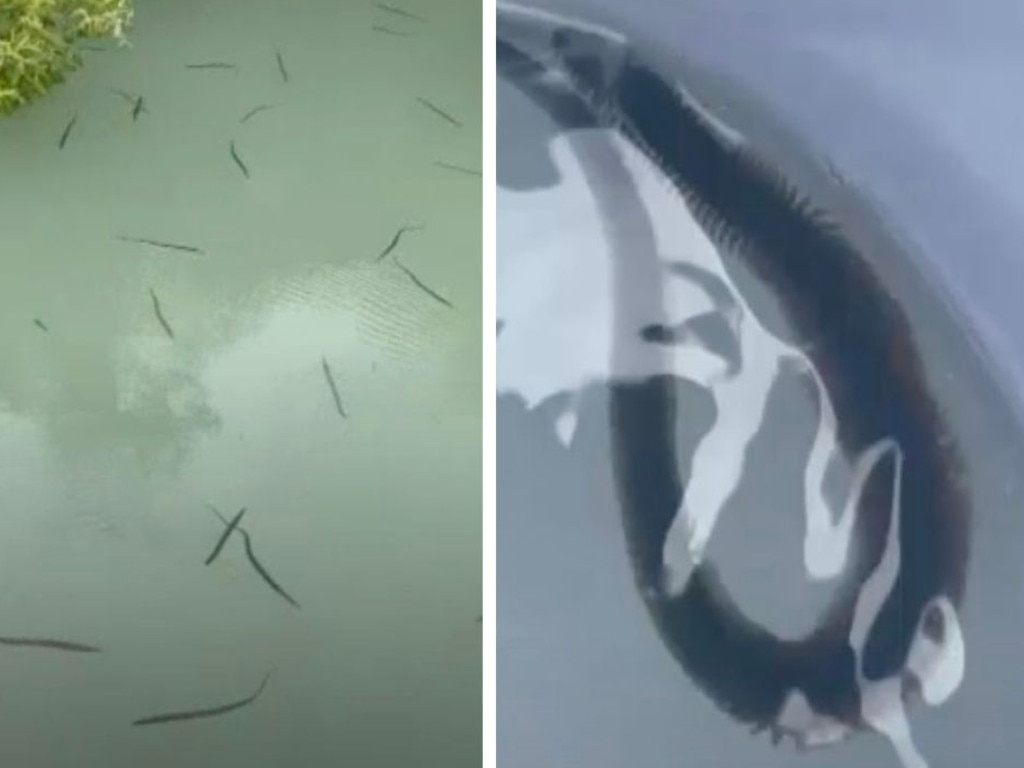Queensland fisherman films swarm of creepy ‘centipede’ worms coming out of mangroves
A fisherman in remote North Queensland has filmed a rare occurrence in nature while out fishing with his daughter.
A fisherman in North Queensland has filmed a rare natural occurrence while fishing with his daughter..
Robert Norris, 50, and his daughter observed a large number of worms swarming along the water’s surface while mud crabbing in Waverly Creek near St Lawrence.
The worms were around 200 to 250 millimetres long and 8 to 10mm wide, resembling flatworms with little legs all around their bodies.
Mr Norris contacted his angler friends, who reported seeing similar worms but were surprised by their sheer quantity.
Australian Museum senior fellow Pat Hutchings, an expert in sea worms, said the worms belonged to the Nereididae family, commonly known as ragworms.
The exact species couldn’t be identified from the video, and Hutchings suggested it might be unknown to science since a significant portion of Australia’s invertebrate fauna remains unidentified.
“[The swarm] is actually quite a common phenomena, but probably something most people don’t ever see,” she said via the ABC.
Ragworms typically live in muddy sediment but gather in the water to spawn, shedding eggs and sperm, which explains the green goo observed by Norris’s daughter.

Dr Hutchings mentioned that many seaworm species die after spawning, occurring at least once a year for most varieties.
Factors like lunar phases, temperature, and salinity can trigger spawning events, and recent heavy rainfall in North Queensland might have influenced the creatures in the waterways.
Marine biology associate professor Ian Tibbetts explained that heavy rainfall can reduce estuary salinity, prompting organisms to move towards the coast to maintain a suitable saltiness level.
“What a [heavy rainfall] does is push the salinity of the estuary down so it becomes more fresh, and a lot of organisms will move to [the coast] to try and stay in the same sort of saltiness of water,” Dr Tibbetts said.



